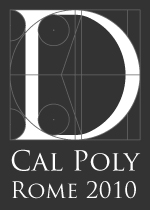Chiesa Del Moped
Designing through a moment…
…has the potential to enrich a project through detail and a underlying narrative that taps into the experience of the visitor. Having been translated from the existing conditions, this projects has the projected future of a Roma that is taken over by mopeds. To facilitated the growing need for speed, immediacy, and efficiency, Romans have adapted their lives to revolve around their quick scooters. The questions that is developed from this scenario is: ‘How would ritual be adapted to facilitate the moped?’
When looking at ritual in Rome, one doesn’t have to go far. Around almost every corner stands one of Rome’s strongest houses of ritual – the church. It is easy to see today how the ritual has already become diluted by the quick pace of life and need of immediate satisfaction. How can a moped then preserve the deep narrative of the church while still adapting to the scooter-dominated future?
The answer developed here focuses on the moments of church and the sequence developed through mass. In this project, Chiesa del Gesu in the heart of the historical center of Rome is used as an example and its moments are unearthed and translated through a careful intervention. Each moment has been changed to facilitate the fast pace of the future. Prayer can be done on mopeds, confessionals become drive through, even the Eucharist can be driven through.
Over the existing marble floor, a steel platform is placed, with structure designed to minimize the impact on the stone. Along the path of the moped, rumble strip are cut into the steel, creating a hum as the mopeds pass over them, and filling the church with harmonious chords. The confessionals open under the control of the priest to allow the moped in. Steel mesh separates the priest and the confessor, while lights from below the steel come through a grating and isolate the confessor with his or her sins. When blessing the host and blood of christ, priests enact transubstantiation through the ritual turning of a wheel, which activates the dispensing of the host and the wine so that they can be collected by members of the church as they drive up to the machines. Here, the mystery of the Eucharist is preserved, though adapted.
In addition, the quality of performance and spectacle in the church is kept. Chiesa del Gesu was the conceived by St. Ignatius of Llyola and holds his chapel in special regard. The chapel of St. Ignatius has a macchina barroca, or conversion machine, designed by Andrea Pozzo to hide and reveal the statue of St. Ignatius behind a painting. Each day, the ritual of the church is to tell the story of the Saint and reveal his statue from behind the painting, while illuminating the splendor of the church. The daily revealing of the statue and daily masses are two performances that are preserved in the intervention by hydraulic floor panels under the dome that can be lifted to create tiered moped parking that can both focus on the statue or the altar.

